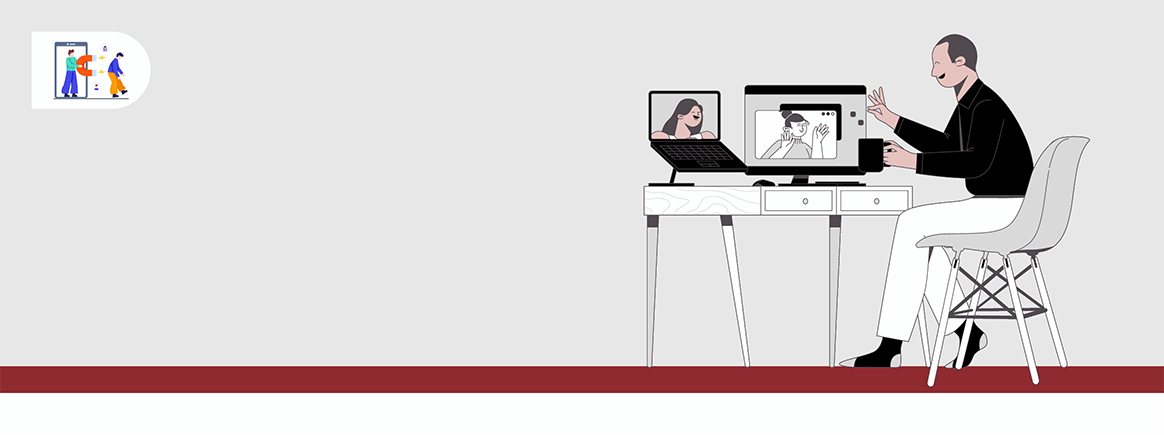
Create Positive Interactions to Support Your Employees Working from Home
Remote work is, in some capacity, here to stay. It is clear from our 2022 Legal Survey that employees want it, and — if done properly — employers can benefit from it. The most recent WFH Research found that the gap between employees' desired number of days and employers' plans of working from home post-Covid continues to shrink. The benefits are too substantial, and many will vote with their feet if they are forced back into the office permanently.
Ironically, however, employees also miss aspects of being in an office every day.
Over the past few blog posts, we have explored how to support employees who are working remotely, including with a clear policy and with sufficient technology.
The final aspect of successfully supporting your employees who are working partly or fully at home is to actively work to increase positive social interactions and decrease negative ones. We outline some of those below.
Increase Positive Interactions
Nearly 40% of respondents in our survey cited reduced communication with coworkers as a negative impact of working remotely, and a further 30% said it was difficult to coordinate with coworkers. While popping into a coworker's office quickly to sort out an issue may no longer be available to those working remotely, actions can be taken to substitute the lack of physical premise and encourage collaborations.
New lawyers completed their articles remotely and may not have yet set foot in the office, but most legal professionals whose careers preexisted the pandemic will miss the opportunities to engage in positive interactions in office with their colleagues.
In particular, many of our respondents who are lawyers lamented the loss of access to mentorship by partners. After sorting through the survey data, we were able to piece together a picture of five-star firms and what they do to increase positive interactions.
-
Increase Training
Employees at five-star firms were 25% less likely to cite lack of training as an issue. Lack of training was identified as one of the top frustrations experienced by law firm employees of all levels. This is likely because a lot of new technology may have arrived at once, though many law firms also consistently underinvest in training. Ensure that you offer proper training on these new technologies (and your old ones — never a bad time to brush up!) and on the different processes and expectations arising from WFH. -
Increase Engagement
Five-star firms were 69% more likely to engage in employee engagement efforts. Ironically, while your employees love working from home, they do miss the office. Many respondents reported missing out on seeing friends and coworkers, office parties and events, and keeping up with one another's lives. Five-star firms countered these issues by offering a variety of team-building activities ranging from simple events, like virtual hangouts, team lunches, and even specific days when all employees are required to be in the office, to more elaborate parties and even firm vacations. -
Increase Morale and Mentorship
Respondents at non five-star firms were 36% more likely to suffer from low morale, 132% more likely to say they had difficulty with daily routines and time management, and 161% more likely to say they felt less patience and tolerance from others. If you take a population who are working remotely, or during a catastrophic pandemic, or both, it is likely that they will suffer issues with morale, productivity, routine, and that they will feel less patience and tolerance from others. What is absolutely striking is the degree of difference between how much these were felt by those at five-star firms and those who were not. They are some of the largest gaps in our survey. Many respondents indicated that opportunities for mentorship, community, and basic support from their colleagues and bosses were significantly reduced. Focus your efforts here, as much of what is required has very little cost, but is easy to forget (with dramatic consequences).
Consider insisting on some level of person-to person, synchronous (where both parties are present at the same time) contact each day. While more time-consuming than an email, these situations give your employees a chance to connect with one another, to keep projects on track, to engage in mentoring activities, and to maintain the cohesive social structure of your firm.
Decrease Negative Interactions
More and more office interactions are happening over asynchronous means, usually in text form (by email, by Slack, by text message or other messenger services). There has been a significant increase in concern over how those messages are being perceived. A recent survey conducted by Loom found that one-fifth of all respondents had been reprimanded, demoted, or even dismissed over a misinterpreted message sent at work. 90% of respondents said they had misunderstood a message, and 60% said that written communication at work and its potential for misinterpretation negatively affected their mental health. Human brains are hard-wired to assume the worst without more context, and asynchronous communication can be very light on context indeed.
The following are excellent ways to reduce stress in your firm arising from these difficulties:
-
Support Employees
Most important: talk about these difficulties. Acknowledge that they will occur and that there needs to be a mechanism within your office to clarify misunderstandings and reduce tension. Encourage employees not to assume the worst and to ask for more details or to speak directly with coworkers before negative situations arise. -
More Face-to-Face
Additionally, encourage face-to-face, telephone, and video interactions both in the first instance and certainly whenever confusion arises in asynchronous communications as these have a lower instance of misunderstanding. There is a tendency to view meetings as a waste of time (the classic line being that a meeting could have been an email), but asynchronous communication can waste much more time than one expects, especially when multiple stakeholders are involved and back-and-forth is required. -
Deploy Software
Admittedly, as a software company, this is one we like, but software can really help in this situation. The authors of the study referenced above are a company called Loom. Loom allows users to make quick videos that simultaneously capture one's screen and the video from that user's camera, which can then be sent and viewed very easily. The effect is that the recipient can see what the sender is talking about (from their screen capture), but also the sender's face, tone, and mannerisms as they convey their message. This produces a much friendlier interaction and is less likely to cause a misunderstanding. Loom is incredibly easy to use — easy to start, record, edit, and send. Check it out! And keep your eyes open for other software that speeds up communication.
Employees who choose a hybrid or work-from-home arrangement must be set up for success, or you risk creating a new set of problems that might affect retention. The above steps can help your team stay productive for your business while feeling valued and supported.
If you are interested in learning more about WFH technologies and how to support remote employees, I invite you to download our free 2022 Legal Survey Report, which provides an enormous amount of data and includes a more in-depth discussion of the above topics.
You may also like
Happy Holidays Message from David Swadden, CEO
December 18, 2025
We would like to wish all our clients and readers a wonderful holiday season filled with joy and laughter.
Tracument Holiday Schedule
December 11, 2025
We would like to update all our clients of our Holiday Schedule this holiday season!
Tracument Wrapped!
December 4, 2025
What 2025 Looked like for Tracument and for you!




